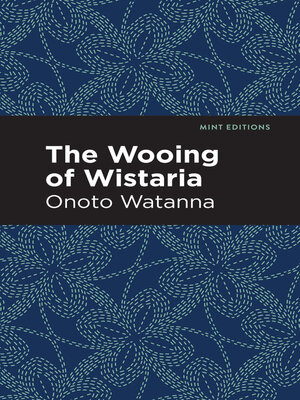Der «Tesoro» (1611) als Schlüssel zu Norm und Usus des ausgehenden 16. Jahrhunderts
ebook ∣ Untersuchungen zum sprachhistorischen, lexikographischen und grammatikographischen Informationspotential des ersten einsprachigen spanischen Wörterbuchs- Teil 1 und 2 · Bonner Romanistische Arbeiten
By Onoto Watanna

Sign up to save your library
With an OverDrive account, you can save your favorite libraries for at-a-glance information about availability. Find out more about OverDrive accounts.
Find this title in Libby, the library reading app by OverDrive.



Search for a digital library with this title
Title found at these libraries:
| Loading... |
The Wooing of Wistaria follows the life of a vicarious and bubbly young Japanese woman, Lady Wistaria. Beginning with her presentation to high society, Wistaria reflects on her experience meeting the court. Accompanied by her aunt, who was her guardian, Wistaria visits the capitol city for the first time, enamored by the sights. She enters the court knowing all that was expected of her. The court is in awe of her beauty, but when Wistaria makes a small mistake, she is immediately shamed. Though Wistaria is kind, beautiful, and full of personality, she is consistently judged throughout her life for her qualities that conflict with society's standards. This is especially evident in her relationship to her father, who is a stoic and harsh man. Dedicated to upholding the social expectations and etiquette, Wistaria's father is tough on her, and despite her reflections, Wistaria never really understands why.
Through the depiction of Lady Wistaria's life, The Wooing of Wistaria by Onoto Watanna provides representation of Asian heritage and aspects of 20th century Japanese society, allowing readers a privileged perspective into the culture. Featuring beautiful and detailed descriptions of Japanese landscapes, the physical environment of Japan is represented as vividly as the cultural and social atmosphere. With themes of gender and sexuality, The Wooing of Wistaria is thought-provoking and enlightening on the constructs of Asian femininity. Through the characterization of Lady Wistaria, The Wooing of Wistaria portrays a bright and cheery young woman who does not fit the role she is expected to fill.
First published in the early years of the 20th century, The Wooing of Wistaria by Onoto Watanna has rarely been in print since its original publication. This special edition features a stunning cover design and is printed in an easy-to-read font. With these accommodations, this edition caters to contemporary readers by restoring the novel to modern standards while preserving the original intricacy of Onoto Watanna's work.






